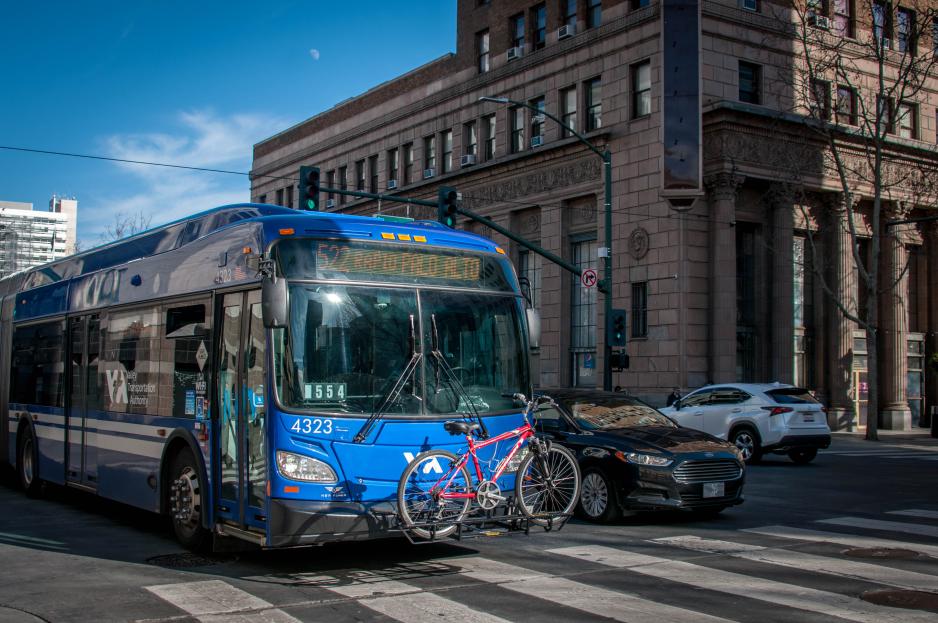How Cities Benefit with a Transit-First Policy
Presently, cities are enacting goals to reduce climate change from vehicle emissions, decrease vehicle miles traveled and improve equitable outcomes so everyone in Santa Clara County can thrive. They are also planning for how to accommodate increased travel demand from anticipated growth and take advantage of other transit benefits such as affordability, maximizing road space, and taking polluting cars of the road. One of the most effective strategies to meeting these goals is to get more people out of their vehicles and onto public transit. To make this strategy effective, transit must be fast and convenient.
Cities can help improve transit in their community by adopting policies that control the factors that determine the quality and quantity of transit service: street space allocation, signal timing, and signal priority. Giving priority to public transit—in the form of transit lanes or preferential signal timing— speeds up transit and makes it more desirable for potential riders and helps cities meet their climate change goals.
To assist cities, below are key examples demonstrating how transit-first polices can help cities in meeting their goals.
Fast transit creates more transit.
The faster transit travels, the fewer buses or trains that are needed to provide the same frequency of service. Making transit faster frees up buses and trains that can be reallocated as additional frequency, wider hours of service, or new transit routes.
Fast, frequent, reliable transit induces mode shift.
Speed, frequency, and reliability are the three main factors that determine a person’s likelihood of choosing to travel by transit. Fast, frequent service allows a transit rider to access a lot of destinations in a short amount of time, making transit and travel by car more time competitive.
Traveling by transit reduces climate change impacts.
Per-person energy use and vehicle emissions are greatest in private vehicles. Transit allows for more energy-efficient and less-polluting ways of traveling.
Fast transit supports a more equitable society.
The auto-preferential design of our transportation system creates different levels of access to opportunity for those who can travel by car and those who rely on transit. Since transit riders are disproportionately lower income, minority, and more likely to have a disability than the general population, this disparity means the transportation system is a systemic cause of worsening inequality.
Transit uses street space efficiently.
As cities grow, the travel demand placed upon streets increases. Maintaining mobility in the future requires moving more people in the same amount of space. Transit (and cycling and walking) use less street space per person than travel by automobiles. Shifting trips to these more space-efficient modes allows cities to maximize the utility of streets and keep people moving.
Maintaining the status quo endorses the current outcomes.
Making no changes to transportation or land use policies will likely result in slower transit as congestion increases on city streets.
Transit-First Policy
To provide a clarity for the community, an agency may wish to consider adopting a transit-first policy.
